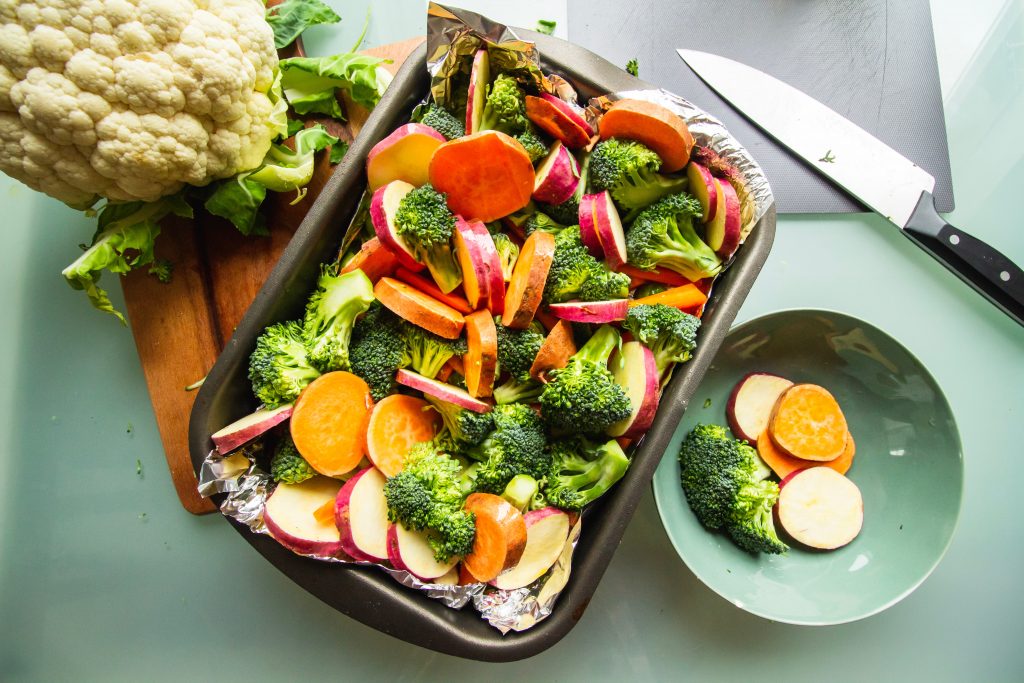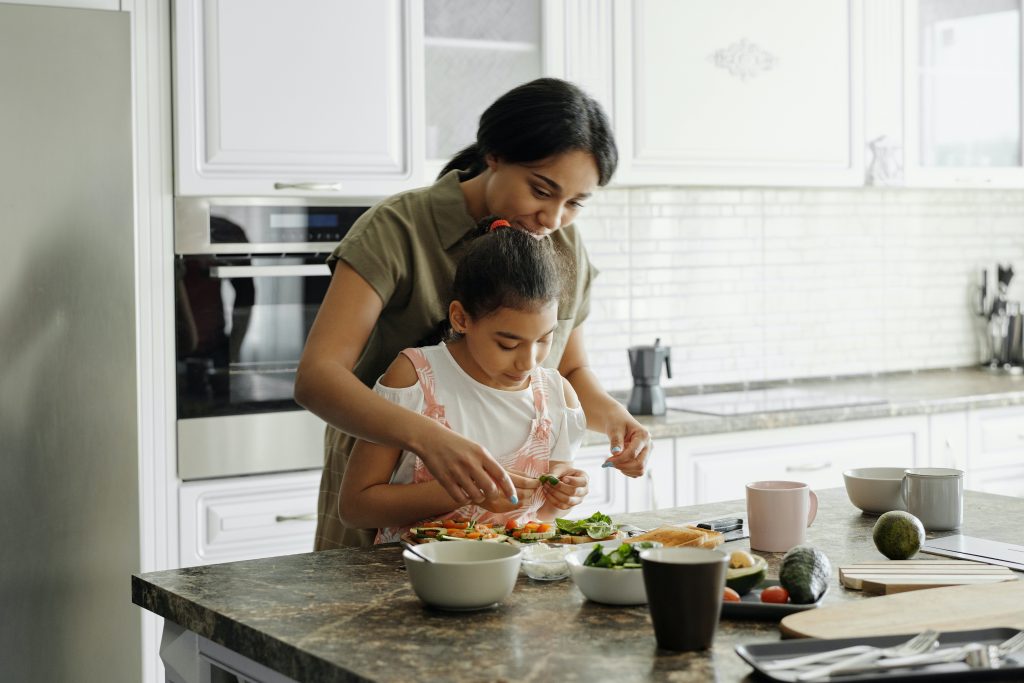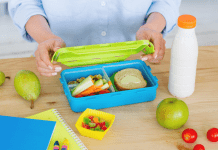Celebrities are doing it, your neighbor is doing it, and your great uncle in Muskegon who was raised on meat and potatoes is definitely not doing it. “It” is switching to a plant-based diet – a diet free of meat, fish, and dairy and “it” can often be super intimidating.
With vegan diets becoming more popular by the day and the country facing meat shortages, many families find themselves wondering what changing to a plant-based diet might look like for them. If you’ve been interested in trying a vegan diet or incorporating less meat into your everyday life, follow along in our three-part series, Starting a Plant-Based Diet Made Easy.
What is a Plant-Based Diet?
Before we get into how to start a plant-based diet, it’s important to understand the different routes you can take. Here’s a breakdown of the different non-meat eating categories:
- Vegetarian
This popular term covers those who do not eat meat or fish/shellfish but do consume dairy in various capacities. - Pescatarian
Those who do not eat any meat but do consume fish or shellfish; they generally do consume dairy but some do not. - Flexitarian
Also referred to as semi-vegetarian. People who occasionally eat meat and fish but prefer plant-based options. - Vegan
Those who eat zero meat, fish, or dairy. Modern day vegans are often unofficially divided into two categories:- Avoid Raw Animal Products
These vegans do not purchase or cook with any meat, fish or dairy. They generally avoid animal by-products like lard or gelatin (found in jello or candy), but will usually eat food that is made with an animal product. Example: pasta made with egg. - Avoid All Animal Products
These vegans avoid all animal products and by-products, and do not eat food made with or derived from animal products.
- Avoid Raw Animal Products
How Do I Start a Plant-Based Diet?
The first step is deciding what you’ll cut out and when. Pick a product, a meal, or a day:
- Products
You can pick specific items you want to eliminate from your diet. Example: you won’t eat any beef or you’re cutting out all dairy, milk, and eggs. - Meals
You can pick specific meals that you will make totally plant-based. Example: make a commitment to eat every lunch vegetarian moving forward. - Days
You can pick specific days that you will devote to your new lifestyle. Example: meatless Mondays or vegan/vegetarian during the weekdays and flexitarian on the weekends.
Take this plan week-by-week and gradually increase food groups, meals, or days as you feel you are ready. There is no one right way to start and no timeline!
Once you decide how you’d like to begin, it’s very important to discuss this with your family. You’ll need their support and acceptance as you try out something new. Will everyone be trying plant-based foods or will you need to make adjustments and substitutions for yourself?
You’ll also want to chat with your primary care physician if you have any ongoing medical issues or health-related questions.
What to Eat on a Plant-Based Diet?
Through personal experience, I know the hardest part of beginning this journey is simply trying to figure out what to eat. The best way to start is to find some key recipes you can easily incorporate into your everyday life. Some great websites are Cookie and Kate or Choose Veg which offer a variety of resources and recipe blogs.
But, let’s be honest. As moms we have only less and less time to experiment in the kitchen. So, if you’re ready to give plant-based a go, here’s a list of friendly meals and snacks to help you kick off. These are a great start to get you and your little ones the nutrition you need without sacrificing taste!
- PB&J with a side of veggie sticks and vegan ranch (Quick tip: for a new taste, sub in almond butter or sun butter if you are nut-free.)
- Hummus with pita and sliced red peppers
- Black bean and poblano tacos with your favorite salsa and shredded vegan cheese
- Vegan mac and cheese with frozen peas mixed in – homemade or boxed – Annie’s has a great option!
- Butternut Squash Chipotle Chili with Avocado
- Fruit Salad: strawberries, oranges, blueberries, blackberries, apples, cherries, and mangos are all highly nutritious. Try throwing in sliced almonds, cashews or sunflower seeds to kick it up a notch.
- Avocado toast
- Fried rice with baked tofu, broccoli, peas, and carrots (My family swears by this tofu recipe!)
- Buffalo cauliflower
- Mediterranean salad: make any combination of diced tomatoes, cucumbers, olives, red onion, chickpeas, roasted red pepper, sliced spinach and cooked quinoa with olive oil, salt and pepper, Feta or vegan Feta optional! This one is fun for kids to participate and mix it all together!
- Banana spinach pancakes (Fun Fact: maple syrup is actually very healthy in small quantities!)
- Pasta salad with zucchini, squash, and cherry tomatoes marinated in olive oil, salt and pepper
Give Vegan a Go!
Now that you know what a plant-based diet looks like, how to start, and what to eat, are you ready to give veganism a try? Remember, there isn’t just one route to take and there is no wrong or right way to do it!
Next time, we‘ll dive a little deeper into the nutritional side of eating a plant-based diet, common mistakes to avoid, and cooking tips and tricks!










